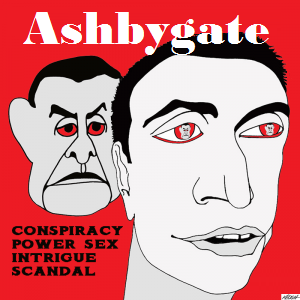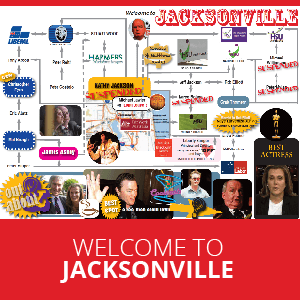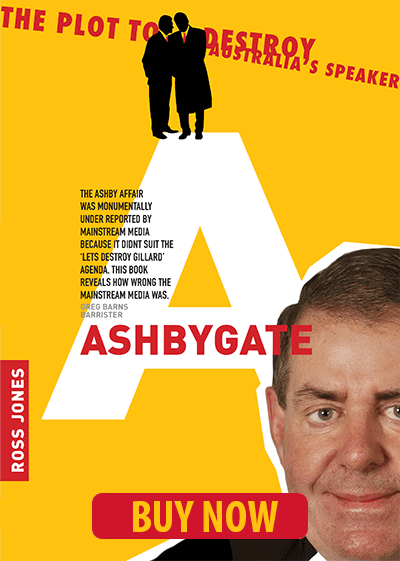On Thursday, 18 November 2010, Professor A.J. Brown stated at the Queensland Australian Republican Movement AGM held in the old Queensland Legislative Council chamber that “the ARM is the only group in modern Australia to be carrying on the role championed in the 1890s by the ANA.” Certainly the Australian Natives’ Association was instrumental in supporting the ‘people movement’ that spurred on the Federation Movement of the 1890s. It is today’s ARM that champions the peoples’ movement for an independent Australia, writes Glenn Davies.
DURING the early 1890s, the colonial politicians were not the only ones discussing the future structure of the nation. The Australian Natives’ Association was a middle-class mutual insurance friendly society formed in Melbourne in 1871 to 1872 with membership restricted to the native-born. It had a moderate political approach.[i]
The Australian Natives’ Association’s most prominent member and orator was Alfred Deakin and he was very active in its support for federation. As a result of the dissatisfaction with the colonial parliaments’ perceived dalliance over the federation issue there emerged from the Kyneton conference of the Australian Natives’ Association in March 1893 a call for the establishment of active popular organisations.
The backbone of the Australian Natives’ Association were leading citizens and younger professional men and debating society types: middle-class intellectuals. Certainly, the Australian Natives’ Association was the largest group within the “nativist, democratic middle-class”.[ii] The commitment of the Australian Natives’ Association to federation was shown when the chair ruled discussion of a republic as out of order.[iii] They saw themselves as the inheritors of British liberalism. However, in the mid-1880s there had been a brief outbreak of republicanism within the younger members of the Australian Natives’ Association. These expressions of separation were calmed though pressure from senior leaders and the castigation from the Argus and Daily Telegraph.[iv] Many Australian nationalists, especially Victorians, gave their support to the Australian Natives’ Association.
Edmund Barton mobilised the middle-class political elite through the Federal Leagues in New South Wales in opposition to radical republican and labour forces. In late 1892 and into 1893, Barton held meetings throughout New South Wales and with border Victorians. He argued, “that a Federal League, on strictly non-party lines, would greatly strengthen the hands of federalists in Sydney and Melbourne … by the end of May there were 15 branches of the League in the valley of the Murray.”[v] The Federal Leagues filled a vacuum for popular participation in federalism not open to non-native Australians who could not join the Australian Natives’ Association. The Australian Natives’ Association was now the Victorian federation power base whereas the Federation Leagues became the New South Wales federation power base. These were examples of politicians using sources of power outside parliament to force along their political imperatives. It was a means of getting the message out. As Quick and Garran put it, “The League never had a sensational history, but thenceforward to the end of the fight it shows a record of steady organising and educating work.”[vi] With reference to the Australian Natives’ Association, they stated,
"...it had long become apparent that the Parliaments would accomplish little without a stimulus from their constituents and the conviction grew that federalists must create a public organisation, with the twofold object of demonstrating to the Parliaments the strength of the federal sentiment, and of further solidifying and educating that sentiment."[vii]
The Australian Natives’ Association was “not only a power in politics, but also a political training school of the greatest value.”[viii] The new Federal League movement was also an attempt to educate public opinion. In doing this the federation leaders acknowledged they needed the support of a “people movement” to ensure the federal cause survived.
On 3 July 1893, Edmund Barton called a public meeting at the Sydney Town Hall to form a central organisation for all the Federal Leagues to keep the colonies connected.[ix] The Australian Federation League pledged,
"...to advance the cause of Australian Federation by an organisation of citizens owning no class distinction or party influence, and using its best energies to assist Parliamentary action, from whatever source proceeding, calculated to further the common aim of Australian patriotism."[x]
[caption id="attachment_2818" align="alignright" width="195"] Edmund Barton
Naturally, there was opposition to the Australian Federation League’s formation from the opposing political forces. Barton’s response to the large number of radical republicans present who were attempting to hijack the formation of the Australian Federation League was:
"A federation properly constructed and started on broad democratic lines would work out its own destiny. The question whether this nation was to be in its present position towards the English Crown, or whether it was to be an independent nation – (cheers) – could not be settled by half a dozen separate colonies, but it could be settled by one united Australia, therefore an agitation for independence was premature. Let them wait until they got the colonies federated, and take the voice of Australia, and whatever the result would be he would abide by the result. He was not an agitator for a republic, he was content with the present relations with the English Crown …"[xi]
This was a clear statement from Barton on his public position on the republican ideal. He held no discussion with the radical republican position. His focus was on federation of the Australian colonies. However, his middle-class constitutional republican ideals can be gleaned from his comments in the federation debates during the 1890s. The “disguised republican” views held by Barton were hidden from the general public. As evidenced by Barton’s actions, the place of constitutional republicanism within the federation movement was a matter of tactics.
Quick and Garran documented that during the public meeting members of the Democratic Social Federation made “a determined but unsuccessful effort to capture the Town Hall meeting, and to pass resolutions in favour of an Australian Republic.”[xii] This was one of last times before federation in 1901 that labour forces attempted to link radical republicanism to the federation movement and mobilise the working-class behind Australian nationalism in a large, open forum. The amendment called for an Australian federation in the form of a democratic republic to be called the United States of Australia with a Federal Parliament consisting of only one chamber.[xiii] From the tone of the Sydney Morning Herald report it appeared that the majority of the people present at the meeting were eager for the amendment to be moved. When it was moved, against the wishes of the chairman, Mayor W.P. Manning, and put to the meeting, “it seemed by the show of hands to be carried by a majority of about two to one.”[xiv] When the chair declared that the amendment had been lost the meeting collapsed into disorder.
With the formalities of the meeting completed, and the Australian Federation League established, into the chair stepped a representative of the majority at the meeting, F.C.B. Vosper. After Vosper’s political rejection from Charters Towers in 1893 he had undertaken a series of lectures in north Queensland before making his way through Rockhampton, Brisbane, then to Sydney. He would travel on to Melbourne and Western Australia, where he arrived in 1893, just as the gold boom was commencing. While in Sydney, Vosper had done some writing, including a stint on the Australian Workman. From his actions on the night of 3 July 1893 it appeared he had established himself as a leader of the Sydney republicans in the short time he had been in Sydney. McMinn argued, “Barton’s leagues may have been an elite phenomenon, rather than a popular one, and were gravely suspect to the labour movement … but [Barton] succeeded in making the federation movement appear popular.”[xv] The Federal Leagues were to occupy the representative place of “the people” in the federation debates. Yet the leaders of the Federal League were themselves politicians and the federal movement was still driven by politicians in spite of the rhetoric to the contrary.
***
Federation under the Crown was the accepted middle-class position in colonial Australia. It would be incorrect to argue that the republican movement of the 1880s and 1890s arose in response to the call for federation. It is also important that the federation movement and Australian republicanism are not seen as opposing movements or representing opposite positions. The federalists not all supported compliance to British policy and not all republicans promoted a self-conscious republicanism that resisted British rule. Much of what the republicans sought was in fact capable of achievement under the proposed federal constitution.[xvi] The possibility of common ground between the federalists and radical republicans of the 1890s needs to be considered. Radical republicanism was supported in the 1880s and 1890s by several journals, notably the Sydney Bulletin and the Brisbane Boomerang, and by prominent writers such as Henry Lawson. A Republican Union and Republican League were formed in Sydney, and other centres such as Charters Towers formed their own republican organisations. In Charters Towers, republican federation was acceptable to the Australasian Republican Association in 1890. In fact, there were Charters Towers republicans who supported federation before separation: “federation we must have among ourselves, before thinking about independence.”[xvii] However, by 18 October 1890, the Australian Republican was advocating a Republican Conference to be held in Charters Towers, “composed of all the kindred Associations throughout Australasia.” The task would be to decide upon a common platform for all the Associations in a federation structure, with “each Association united and in sympathy with its fellow bodies, while retaining its own autonomy and the entire individual liberty of its members.[xviii] The republican federation approach had changed dramatically with the arrival of F.C.B. Vosper as editor in late October 1890.
As the 1890s progressed, radical republicans believed that the establishment of the “Commonwealth of Australia” as a federation under the Crown would be the first step towards full political independence. Helen Irving argues that by the end of the 1890s the remaining republican journals advocated federation because of the perceived advantages in a future central government.[xix] In fact, much of what republicans sought was achievable under the proposed Australian constitution. Henry Parkes had stated in an Address on Federation at the School of Arts, Corowa on 16 August 1893, “I can see no form of government on the face of the earth more calculated to give freedom and security to an independent people than the limited constitutional monarchy of England.”[xx] Parkes went to great lengths in the speech to ensure it was understood he was not a supporter of creating an Australian republic. However, he argued that no matter what a person’s political view the best course at present was the federation of the colonies. Even so, he was still opposed to those that favoured federation in the form of an Australian republic. Parkes refuted a republican federation through comparisons with the unstable “republics of South America” and the “limited monarchy of England … [that] leaves us more at liberty than we should be under any republic that ever existed.”[xxi] Garran had referred to John Dunmore Lang as a grandfather of federation.[xxii] Lang’s progeny was liberal republicanism. In the 1850s, he had been the advocate of both republicanism and federalism. For Lang, the American republic was the model for Australian political development. However, in 1897, Garran stated,
"...there is no necessary connection between federalism and republicanism. It is true that the governments of Federations, and of the States composing Federations, have usually taken a republican form; but this is not invariable, nor is it necessary either for the realization of the federal ideal or for the practice of federal principles."[xxiii]
Garran was trying to insert a wedge within liberal republican thinking. The adoption of federalism was necessary for the new Australian nation in order to accommodate the independent interests of the various colonies into the one political union. Yet the federation delegates insisted on the establishment of a federal nation based on parliamentary representative democracy, that is, Parkes’ “limited constitutional monarchy of England”. The 1891 draft Constitution of Andrew Inglis Clark was based on the concepts within a federal republican structure. This was the basis of liberal republican thinking. For Inglis Clark, there was a necessary connection between federalism and republicanism. The novel situation was that, like the “disguised republic” of constitutional republican thinking, the essence of the federal republic structure was within the “Trojan horse” of the draft Constitution.
On 31 July 1893, the Australian Federation League convened the Corowa Conference at the New South Wales-Victorian border town of Corowa. There were 72 delegates from the Federation Leagues and the Australian Natives’ Association, among others. At the public meeting, motion after motion was proposed in favour of federation, approved and applauded. The President of the Australian Natives’ Association, A.J. Peacock stated, “separate existence meant the founding of an Australian republic – ‘cutting the painter’, or ‘running on our own hook’.”[xxiv] However, debate on the republic as a non-monarchical, independent nation was nipped in the bud at the Corowa Conference. At the second day of the 1893 Corowa Conference, it seemed nothing would come of the conference itself but words. Then in a moment of inspiration, Dr John Quick of Bendigo successfully passed a resolution calling on colonial Parliaments to pass Enabling Acts to allow for the popular election of delegates to a Constitutional Convention. Quick and Garran explained the importance of direct election of the representatives to the Convention:
"The two things now wanted were popular interest in the framing of a Constitution, and popular confidence in the Constitution when framed; and the best guarantee of both these things was that the people should be asked to choose for themselves the men to whom the task was to be entrusted."[xxv]
The Enabling Acts would provide a new Constitution, written by the elected Convention, to be submitted to the voters for their approval at a referendum. It was a radical and ingenious plan. This was the first time a Constitution for a new nation would be the work of elected representatives and not enacted without the voters’ explicit approval. The plan acceded to the demand for popular involvement and captured the democratic sentiment that the people should be asked their view of the Constitution under which they were to live. Importantly, it set out in advance the steps to be taken through to completion. The plan was also daring, for no one could be certain that suitable, sensible delegates would be elected, nor that the referendum would succeed.
The 1893 Corowa Conference was a turning point because the middle-class educated elite who wanted federation found a way to gain popular support and hence legitimacy for their cause. The “Quick Resolution” revitalised the political movement towards federation by appearing to take it out of the hands of the politicians and into the hands of the people. The 1893 Corowa Conference affirmed the Australian peoples’ mistrust of politicians and their desire to be directly involved in great political decisions. At the same time, the politicians and the parliaments were still relied on to provide the framework for this involvement. This formula proved successful. The significance of the 1893 Corowa Conference for John Hirst was that it initiated a particularly strong form of popular sovereignty as the very basis of the federal constitution and “that the parliaments agreed to this scheme which took them out of the action is the greatest miracle of Australian political history.”[xxvi] Hirst described the actions taken by the middle-class political elite transformed the federation movement into a popular process: “by these actions the colonial parliaments determined that the federal constitution, unlike their own, would be built on the republican principle of the sovereignty of the people.”[xxvii] However, Stuart Macintyre argued that it was the middle-class political elite who organised and mobilised the federation leagues behind the scenes to give them a popular appearance.[xxviii] Indeed, Macintyre has expressed his scepticism of federation as a popular movement.[xxix] For Macintyre, “the appeal to the people was the means whereby one group of politicians prevailed over another.”[xxx] Hirst later agreed with Macintyre that the politicians helped to create the “popular movement” and they remained key players in the achievement of federation.[xxxi] An appeal to “the people” was an appeal to popular sovereignty, yet, in other circumstances, an appeal to the monarch would also be an appeal to sovereignty.
During the 1890s, Australians were working through understandings of where sovereignty would reside: either with the people as in a republic, or with the monarch as in a parliamentary democracy. In the 2010s the argument has still not been settled. What does seem evident is that the Australian Republican Movement is the only organisation in contemporary Australia occupying the space in Australia’s political landscape once held by the Australian Natives’ Association. The ANA was composed mainly of lower middle class Australian nationalists. Republicanism today is a middle class idea that supports an intellectual approach to constitutional issues grounded within middle-class concepts of individualism rather than the kind of collectivist ideology that has been typical of working-class belief. It is the ARM and its supporters who continue the advocacy for an independent Australia.
[i] See C.S. Blackton, “Australian Nationality and Nationalism: The Imperial Federationist Interlude, 1885-1901”, Historical Studies, Vol.7, No.25, November 1955, pp.179-198.
[ii] W.G. McMinn, Nationalism and Federalism in Australia (Melbourne, 1994), pp.119-120. Hirst stated the Australian Natives’ Association was made up mainly of lower middle-class clerks, teachers and salesmen, as well as representatives of the skilled working-class (Hirst, The Sentimental Nation, pp.36-37.) See also Birrell, A Nation of Our Own, pp.113-114.
[iii] Quick and Garran, The Annotated Constitution, p.151; See also J.B. Hirst, A Republican Manifesto (Melbourne, 1994), pp.34-35.
[iv] M. Quartly, “Victoria”, in Irving (ed.), The Centenary Companion to Australian Federation, pp.224-227.
[v] Quick and Garran, The Annotated Constitution, p.152.
[vi] Ibid.
[vii] Ibid., p.150.
[viii] Ibid., p.151. See also W.G. McMinn, George Reid (Carlton, 1989), p.94.
[ix] See G. Bolton, Edmund Barton (St. Leonards, 2000), pp.113-114.
[x] Quick and Garran, op.cit., p.152.
[xi] Sydney Morning Herald, 4 July 1893.
[xii] Quick and Garran, op.cit., p.152.
[xiii] Sydney Morning Herald, 4 July 1893. For the role of John Norton in the republican machinations see M. McKenna, “John Napoleon Norton and the 1896 Bathurst Convention”, Papers on Parliament, Vol.32, December 1998, pp.110.
[xiv] Sydney Morning Herald, 4 July 1893.
[xv] McMinn, Nationalism and Federalism in Australia, p.155.
[xvi] In the first issue of The Australian Nationalist, 8 August 1888, p.8, the new monthly journal of ‘The Australian National Association’, it discussed its platform. Although it was mainly republican, and accepted all enrolled electors as members, it also advocated “the federation of the Australian colonies”.
[xvii] Australian Republican, 23 August 1890, p.4. See Tom Leahy’s comments, Australian Republican, 20 September 1890, p.9.
[xviii] Ibid., 18 October 1890, p.4.
[xix] H. Irving, “Who were the Republicans?”, in D. Headon, J. Warden and B. Gammage (eds.), Crown or Country. The Traditions of Australian Republicanism (St. Leonards, 1994), p.71.
[xx] Ibid., Appendix A, p.ii.
[xxi] Ibid., Appendix A.
[xxii] R. Garran, Prosper the Commonwealth (Sydney, 1958), p.87
[xxiii] R.R. Garran, The Coming Commonwealth. An Australian Handbook of Federal Government (Sydney, 1897), p.30.
[xxiv] Official Report of the Federation Conference held in the Courthouse, Corowa on Monday 31st July, and Tuesday, 1st August, 1893 (Corowa, 1893), Appendix B, p.xii.
[xxv] Quick and Garran, The Annotated Constitution, p.154
[xxvi] J. Hirst, A Republican Manifesto, p.35.
[xxvii] Ibid., p.36.
[xxviii] This was the position argued by Brian de Garis in a Senate Occasional Lecture, 21 June 1993 and Stuart Macintyre at a lecture to the Canberra and District Historical Society, 29 July 1993 (See S. Macintyre, “After Corowa”, Victorian Historical Journal, Vol.65, No.2, October 1994, p.99.)
[xxix] Ibid., p.102.
[xxx] Ibid., p.111.
[xxxi] J. Hirst, “Federation and the People: a Response to Stuart Macintyre ”, p.80.









